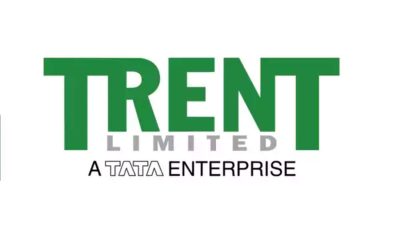Daily News
Gold loans have seen a spike in defaults for both banks and non-bank lenders

The upshot is that gold loans are unlikely to slow down as Indians would want to ride out covid by putting this liquid asset to use.
State Bank of India (SBI), India’s largest lender, is making it easy and cheap for Indians to monetize their most cherished asset—gold. Fintech firms are jumping on to the gold loan bandwagon, and traditional gold loan giants such as Muthoot Finance Ltd have seen their portfolios expand since the covid pandemic struck last year. At the same time, gold is being auctioned in increasing amounts by lenders to recover money from distressed borrowers.
What gives?
Both the quickening growth in gold loans and the auctions of gold for recovery are symptoms of an increase in household distress. To be sure, gold loans had been growing at a fast pace even before the pandemic, reflected in the double-digit growth of focused gold loan lenders such as Muthoot and Manappuram Finance Ltd over the years. But there is an unmistakable spike this time. Muthoot’s gold asset under management (AUM) grew at a compound annual growth rate of 12% between FY15 and FY20. In FY21, the portfolio grew 27%. Gold is used as collateral for a wide range of purposes, from working capital for business to quick cash for an emergency. Low-income households rely extensively on gold loans because of their weak risk scores that keep lenders from providing unsecured funding.
What should raise concern is the change in the triggers for availing of gold loans during the pandemic and the shift in the profile of borrowers. “There is a new segment availing of gold loans, which is what we call the middle class,” said C.V.R. Rajendran, managing director of CSB Bank. The large swathe of middle-income households enjoys access to cheap bank funding, even unsecured. According to Rajendran, that has changed as covid has hit household incomes and made lenders wary of unsecured lending. Gold loans are secured, and the Reserve Bank of India’s (RBI’s) relaxation on loan-to-value ratios for banks has given lenders enough incentive to get into this operations-intensive segment. One of the indicators of middle-income households utilizing gold loans is the increase in ticket size. CSB Bank, an old hand at gold-based lending, has seen its ticket size increase to ₹1 lakh in the June quarter from roughly ₹60,000-70,000 two years ago. Muthoot Finance’s average ticket size has grown to about ₹50,000, from roughly ₹30,000 a year ago. “The unsecured book has become uncomfortable for banks because of covid. Gold loans work in multiple ways; it is fully secure, and the asset is liquid. If you can ride the gold price fluctuation, it is a great bet,” said an analyst requesting anonymity.
That brings us to what happened during April-June this year. Gold loans have seen a spike in defaults for both banks and non-bank lenders. Seasoned lender Manappuram auctioned a massive Rs 1,300 crore worth of gold (roughly 4 tonnes) during the period to recover loans. The lender’s managing director, V.P. Nandakumar, said in an earnings call on 10 August that one of the motivations behind the auctions was to bring down stress in the book and also shed high-value loans. Gold loan lenders have indicated that from here on, stress may reduce.
Byju’s to raise $1.5 bn at $21 bn valuation
Rajendran of CSB Bank said auctions may not slow for another quarter as some states retain regional curbs. That said, he attributes the spike in stress during the June quarter also to disruptions in collection. “For us, it is largely a collection problem because our people could not visit borrowers to assist in repayments due to lockdowns,” he said. What’s more is that the price of gold had fallen 13% in the previous quarter, triggering demand for margin. “When it comes to gold loans, it (the problem) was essentially restrictions on mobility, because what happens with gold loans is when there’s a drop in margin, borrowers are naturally required to come in and deposit some money,” said Dinesh Khara, chairman of SBI, in the earnings call on 4 August.
To that extent, the rise in household distress attributed to being behind the spike in gold loan delinquencies may be slightly overstated. That said, there is no denying that covid has decimated the finances of low-income households. But bankers are hopeful of a revival. In fact, auctioning gold is the last option when all others such as restructuring, offering moratorium are exhausted.
The upshot is that gold loans are unlikely to slow down as Indians would want to ride out covid by putting this liquid asset to use. What remains to be tested is the potential threat from falling gold prices and any further disruptions to recoveries, which may come in the way of repayment of these loans.
Courtesy: Mint




 Daily News2 months ago
Daily News2 months agoBvlgari adds designs to its pathbreaking mangalsutra collection ahead of wedding season

 Daily News1 month ago
Daily News1 month agoTrent, a TATA subsidiary, launches lab-grown diamond brand ‘Pome,’ shares surge 7.67%

 Daily News2 weeks ago
Daily News2 weeks agoMalabar Gold & Diamonds launches ‘Heritage Show’ in Mangalore, featuring jewellery inspired by Maharanis

 Daily News3 weeks ago
Daily News3 weeks agoSavji Dholakia’s visionary water conservation project ‘Bharatmata Sarovar’ reinforces commitment to sustainability






















